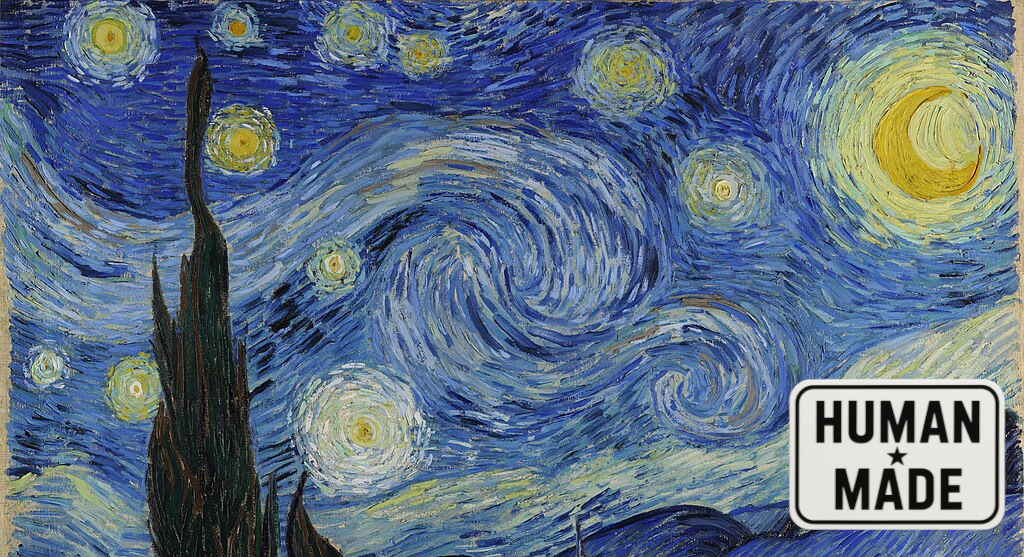A few days ago, I had been listening to a lofi playlist, one of those endless background mixes people use to study. In a few minutes, something felt off. Briefly, the track lost its point, the rhythm and the melody wandered in a way that felt forced, as though it was trying to follow a pattern but couldn’t commit to one.
And that was when it hit me: this likely was AI-composed. I wasn’t sure at first, but reading the comments put my mind at ease, some of the other listeners had noticed the same thing.
Objectively, there was ““nothing wrong”” with the sound. But having discovered that no one had actually composed it made all the difference to my experience. The music wasn’t “wrong”, but it felt hollow, like the function of it was missing.
Why Knowing the Creator Still Matters
I do not believe that it’s important to associate a piece of art with its artist. Personally, i dont do: an artist may be obnoxious, morally dubious, or simply a “piece of shit,” yet if I like his work I am able to appreciate it completely. The art itself is sufficient.
What does matter is that we know that a human being, someone capable of thought, intention and feeling, made it. Knowing that gives it a level of meaning, even if we don’t particularly care about the individual who created it. There is a small but real distinction between consuming something that emerged from a conscious, emotional process and something produced by an algorithm.
We attribute value not only to perfection, but to effort and intent. A sketch drawn by hand, a tune crafted over a series of weeks, or a brief film made with attention all carry traces of human decision-making, testing, and emotional investment. Having this knowledge inspires us to connect more deeply with the work and to appreciate it.
Some might say: “If you don’t know it’s AI, you can still enjoy it.” That’s easy to say now, when we automatically assume every song we hear was made by a human. But in a not-so-distant future, when AI-generated content becomes everyday consumption, the doubt “am I listening to a real artist or not?” will come up much more often.
AI Saturation
Even when AI succeeds at being as accurate as humans, or even more accurate, there’s a common pattern: AI-generated content is too perfect. No real “mistakes,” no small deviations, impefection or unexpected choices, and that makes sense, because it’s algorithms that are doing the job. AI can replicate styles, approaches, and even emotional signals, but those imperfections that mark human work simply get lost.
It’s similar to how actors or models used to have unique features, flaws that gave them character and individuality. Today, with beauty standards homogenized, faces and performances are polished to near uniformity. AI takes this phenomenon to the extreme.
One may argue that AI can mimic human mistakes, and to a certain extent, it is possible. AI, however, cannot make genuinely new human mistakes — it cannot get tired, doubt, or intuit. It can only mix and match within the algorithms it has learned. That is, algorithmic perfection can imitate human failings, but never their origin.
Some may argue that AI can imitate human mistakes, that’s true. But precisely because it can only imitate, it can never create new ones. Many artistic breakthroughs were born out of human error: the distorted guitar tone that defined rock music was the result of a damaged amplifier, the jump cut in film editing emerged from an editing mistake that turned into a stylistic revolution; entire art movements, from abstract expressionism to glitch aesthetics, were sparked by accidents, limitations, or missteps.
The “Human-Created” Label
After all this, it’s not hard to imagine a future where new labels, and perhaps even dedicated institutions, emerge to certify the human authenticity of creative works.
A “Human-Made Certified” badge could become the new mark of integrity, signaling that no AI was involved in the creative process. It would allow any person to immediately know if what they’re watching, reading, or listening to was born from a human mind or an algorithmic system.
